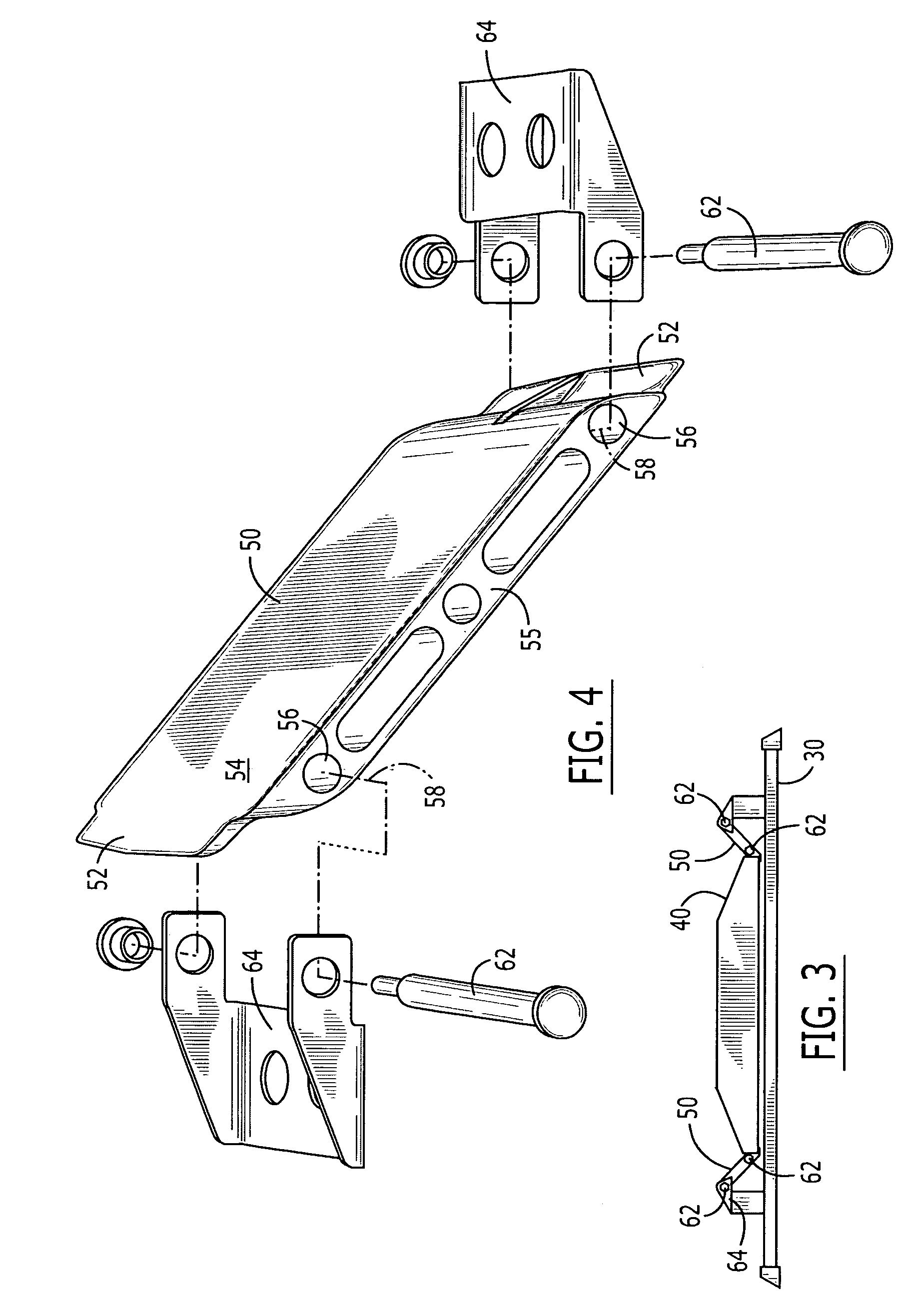Hinged glider mechanism
a technology of hinged mechanism and glider chair, which is applied in the direction of door/window fittings, multi-purpose tools, construction, etc., can solve the problems of increasing the number of parts that are prone to failure, increasing the chance of noisy operation, and requiring significant complexity to rocking motion, etc., to achieve sufficient lubricity and not to generate noise. , the effect of sufficient strength and durability
- Summary
- Abstract
- Description
- Claims
- Application Information
AI Technical Summary
Benefits of technology
Problems solved by technology
Method used
Image
Examples
Embodiment Construction
[0025]Referring now to the drawings, FIG. 1 illustrates a chair 10 according to the present invention in a general perspective view. The chair 10 is of the upholstered type typically found in a home and includes a plush sitting surface 12, arms 14, and a back support 16, all of which together form a seat structure 18, and all of which may be configured with a wide range of desired features outside the purview of the present invention and all well within the skill of those skilled in the present art. The chair 10 is provided with a glider base structure 20, which serves to support the seat structure 18 and an occupant (not shown) in a seated position and through a range of oscillatory longitudinal motion known as gliding. The base structure 20 will be discussed in greater detail in connection with FIG. 2 and other drawings.
[0026]Although a plush, upholstered-style chair 10 is shown in FIG. 1, the present invention is capable of adaptation for use with a wide variety of other styles o...
PUM
 Login to View More
Login to View More Abstract
Description
Claims
Application Information
 Login to View More
Login to View More - R&D
- Intellectual Property
- Life Sciences
- Materials
- Tech Scout
- Unparalleled Data Quality
- Higher Quality Content
- 60% Fewer Hallucinations
Browse by: Latest US Patents, China's latest patents, Technical Efficacy Thesaurus, Application Domain, Technology Topic, Popular Technical Reports.
© 2025 PatSnap. All rights reserved.Legal|Privacy policy|Modern Slavery Act Transparency Statement|Sitemap|About US| Contact US: help@patsnap.com



